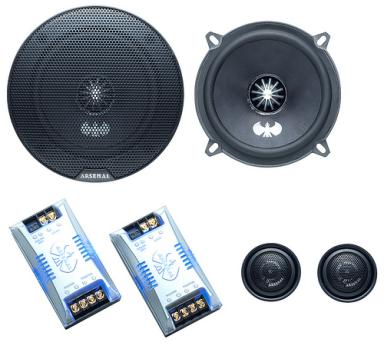Whether you want to wake up your neighborhood with pounding bass, or just plug your iPod into a dedicated stereo input, the thought of upgrading the sound system in your vehicle has probably crossed your mind at some point. Many cars and trucks ship with relatively anemic sound systems, but that problem is relatively easy to fix. It’s possible to replace just about every component in a car stereo system, and most of those components can be upgraded with relatively little technical expertise.
Everything Starts with the Head Unit
The single most important component in any car stereo system is the head unit. This is the component that some people call a stereo, but it can also be referred to as a tuner, receiver, or deck. Most head units do contain AM and FM tuners, but they can also include CD and MP3 players, inputs for iPods and other MP3 players, Bluetooth connectivity, and many other features.
If you’re wondering about the best place to start upgrading your car stereo system, the head unit is usually going to be the answer you’re looking for. Each component in a car stereo system is somewhat dependent on the others, but the head unit is where it all starts. Since most factory head units are light on the features, plugging in an aftermarket unit can really improve your overall driving experience.
When choosing a head unit, you should look for all the features you expect to need within the next few years. If you plan on getting a Smartphone in the near future, you should consider selecting a head unit that has Bluetooth connectivity. In the same vein, you might want to consider installing a head unit that’s a little more powerful than you actually need. In that case, you’ll be able to upgrade your stereo system in the future without the added expense of buying another head unit.
Speakers and Amps
The other main components of a car stereo system are the speakers. Not all factory sound systems ship with a separate amp, but they do all come with at least four speakers. While you can upgrade them without installing a new head unit, you’ll probably be disappointed with the sound quality. Unless your vehicle came with a premium head unit, it probably won’t be able to properly take advantage of upgraded speakers.
On the other hand, installing better speakers can provide you with more room to upgrade the other components in the future. Even if your current head unit can’t take full advantage of the situation, you’ll have the option to put in a better head unit or an amplifier in the future.
Begin at the Ends
If you want to squeeze the most out of a factory head unit, you should focus on the high and low ends of the audio spectrum. This isn’t feasible in every case, but some vehicles ship with separate tweeters. These speakers are typically located in the front doors along with the mid-range speakers, and they’re often low-grade. If that’s the case, you can greatly improve your sound by popping in a couple replacement tweeters.
On the other end of the audio spectrum, you can get a lot of mileage out of upgrading or installing a subwoofer. Most vehicles don’t come with subwoofers, but the ones that do are usually pretty anemic. If your car or truck didn’t come with a subwoofer already installed, the easiest option is to look for a unit that includes a built-in subwoofer.
Other Options
Depending on the make and model of your vehicle, you may have other options available to you. Some vehicles have premium sound options, in which case you might be able to get your hands on a factory deck that will plug right in and match the OEM look of your car and truck. Other vehicles have navigation options that replace the standard head unit. In that case, your car or truck might already have all of the necessary connections to plug that type of unit in.
If your vehicle came from the factory with an advanced infotainment system, your choices might be somewhat limited. There are a number of aftermarket solutions that include GPS navigation and other features, but those head units are typically quite expensive.

Can I Upgrade My Stereo?
by
Tags:

Leave a Reply